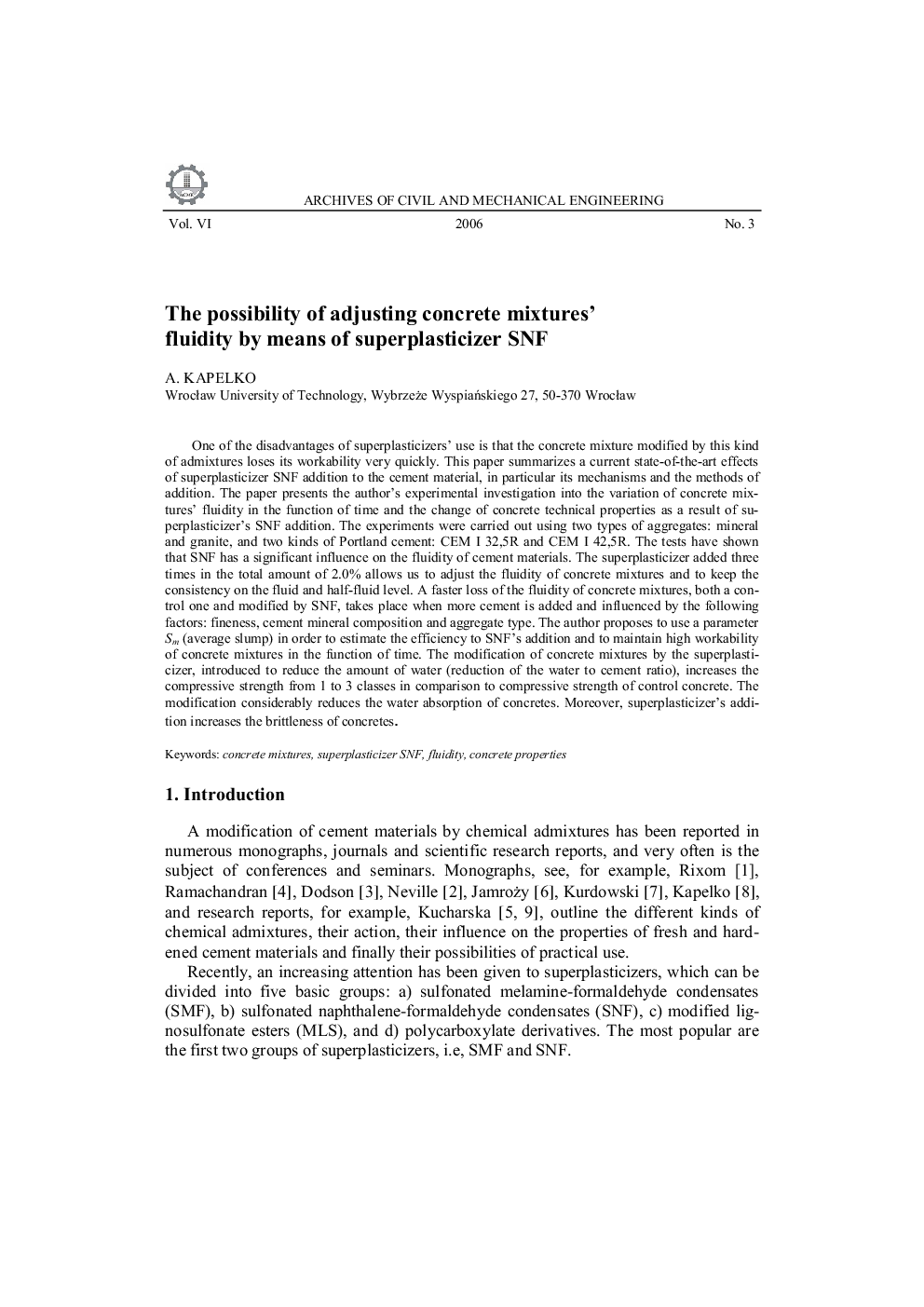| Article ID | Journal | Published Year | Pages | File Type |
|---|---|---|---|---|
| 246190 | Archives of Civil and Mechanical Engineering | 2006 | 17 Pages |
One of the disadvantages of superplasticizers' use is that the concrete mixture modified by this kind of admixtures loses its workability very quickly. This paper summarizes a current state-of-the-art effects of superplasticizer SNF addition to the cement material, in particular its mechanisms and the methods of addition. The paper presents the author's experimental investigation into the variation of concrete mixtures' fluidity in the function of time and the change of concrete technical properties as a result of superplasticizer's SNF addition. The experiments were carried out using two types of aggregates: mineral and granite, and two kinds of Portland cement: CEM I 32,5R and CEM I 42,5R. The tests have shown that SNF has a significant influence on the fluidity of cement materials. The superplasticizer added three times in the total amount of 2.0% allows us to adjust the fluidity of concrete mixtures and to keep the consistency on the fluid and half-fluid level. A faster loss of the fluidity of concrete mixtures, both a control one and modified by SNF, takes place when more cement is added and influenced by the following factors: fineness, cement mineral composition and aggregate type. The author proposes to use a parameter Sm(average slump) in order to estimate the efficiency to SNF's addition and to maintain high workability of concrete mixtures in the function of time. The modification of concrete mixtures by the superplasticizer, introduced to reduce the amount of water (reduction of the water to cement ratio), increases the compressive strength from 1 to 3 classes in comparison to compressive strength of control concrete. The modification considerably reduces the water absorption of concretes. Moreover, superplasticizer's addition increases the brittleness of concretes.
